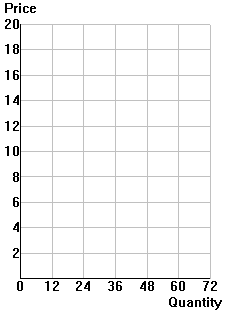| 1. | To solve public goods problems: |
| Step1: Determine the total demand
for the product: Vertically sum the demand curves of all the consumers. This
requires you to express price (P) as a function of quantity (Q) for each consumer and then
add all the P's together to find the total price collected (PT). You can do this because
everyone receives the same Q. Step2: Solve for the optimal output of the public good (Q*): Set the total price (Pt) equal to marginal cost (MC) to solve for Q*. Step3: Determine the prices to charge each consumer: Plug Q* back into each individual demand equation to find out how much each consumer should pay. These consumer-specific prices for a public good are referred to as Lindahl prices. |
|
